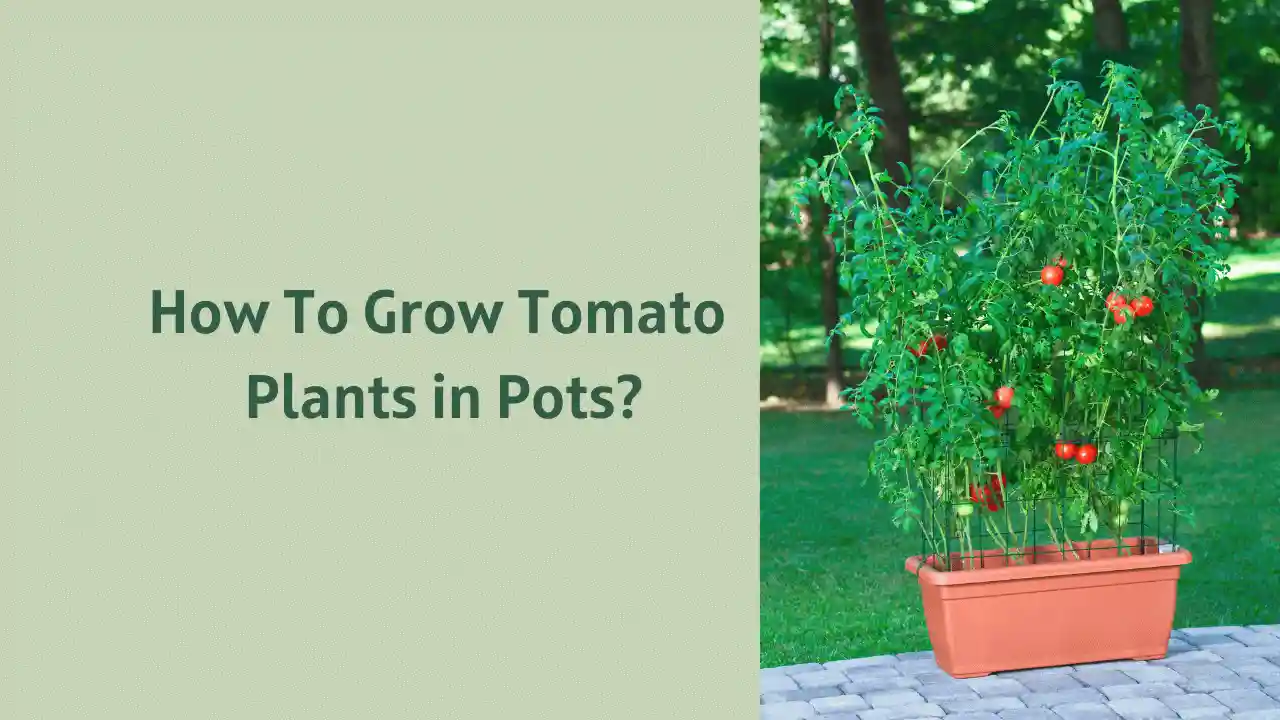Don’t own a Garden and want to grow tomatoes? Don’t worry; it is possible to fulfill your dream of growing tomatoes. You can plant tomatoes even in pots, and yet you can have a high yield.
You just need to select a pot-friendly type of tomato plant, a good quality of potting mix, and good quality potting soil.
Benefits of growing tomatoes in pots
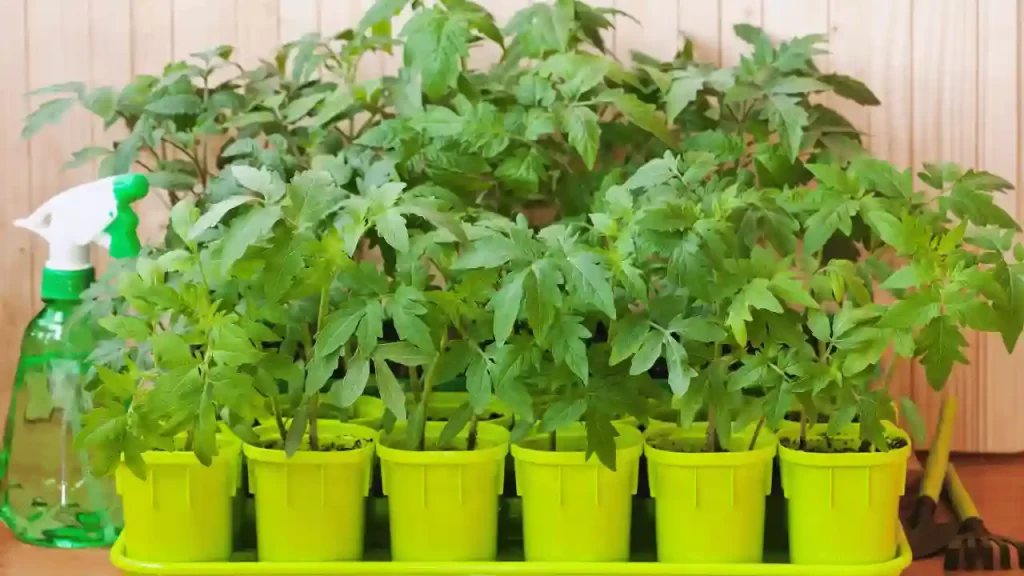
We have numerous benefits of growing tomato varieties and plants in pots. We can control things according to our ease needed in favor of tomato plants for healthy growth and high yield.
A few of the benefits of growing plants in pots are listed below:
- Pruning of the plants becomes excessively simple if grown in pots. You don’t need to go far to maintain these necessary needs.
- Temperature control is also possible. If it’s unfavorable climatic conditions outside, you can bring the pot inside and save your tomato plant from excessive heat, cold, or wind.
- Your plant is escaped from outside animals. They won’t be able to eat or destroy your potted plants.
- It becomes very easy to keep a close look at the tomato plant. It helps to determine if the plant is attracting any pest or developing the disease at the initial stage, and action can be taken instantly.
11 Tips for Growing Tomato Plants in Pots Successfully
When I want to successfully grow tomatoes in potted plants, firstly, I choose a place where my potted tomato plants can get 8-10 hours of direct exposure to sunlight.
Minimum 6 hours of direct sunlight is also good, but it grows more rapidly in maximum exposure to sunlight as tomato is a war-loving plant.
But if you have only shaded places, then you should go for the shade-tolerant varieties of cherry tomatoes, like Black Cherry, Evans Purple Pear, Golden Sweet, Juliet Hybrid (red), etc.
I have discussed a few tips and tricks to grow your potted tomato plants in limited space with a high-quality yield.
Choose the right type of tomato.
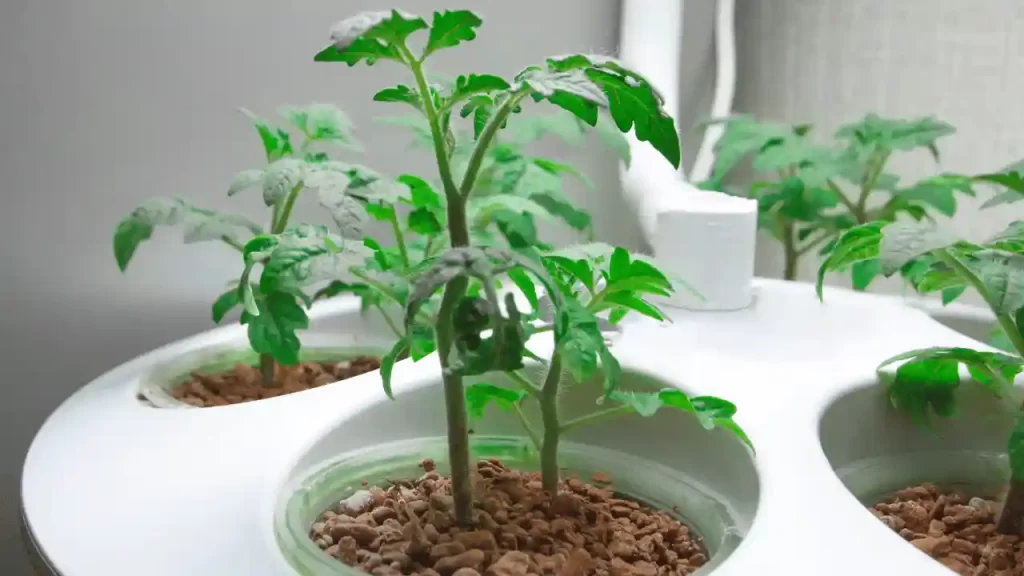
Tomato plants are of two types: Determinate and Indeterminate tomato plants.
Determinate tomato plants are shorter than the indeterminate tomato varieties of plants. Their maximum growth is 3-4 feet.
They are also called bushy, dwarf, and compact tomato plants. It also sets flowers and fruits in one go. Some examples of varieties are Cherry Falls, Italian Roma, Glacier, Rutgers, and celebrity.
But if you can arrange for a minimum of 20 Gallon Buckets and good support, you can also easily plant and grow indeterminate tomatoes or tomato plants.
Indeterminate tomato plants give you an immense harvest if they get an ideal growing environment.
Chocolate cherry, Green Zebra, and Black Krim are some of the indeterminate tomato plants which can be grown in pots or containers.
But it is always better to grow determinate plants only if you have time constraints like you have started late in the season to plant or have a short growing season.
Start with a strong and healthy transplant.
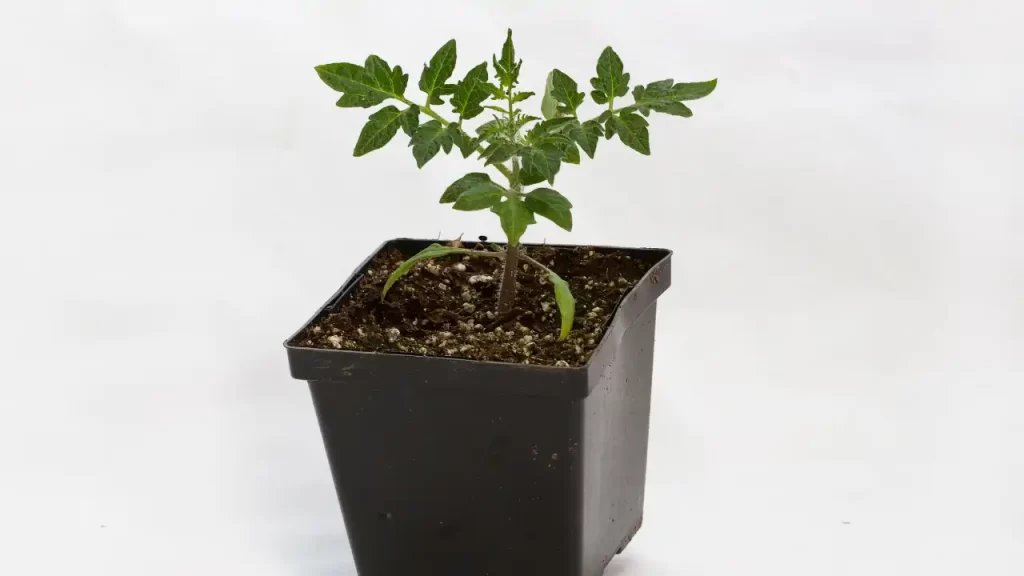
Minimum obstacles are faced while transplanting a Strong and Healthy tomato plant. After germination, the tomato seedling should be repotted at least once (repotting the seedling three times is the best).
Hardening off your tomato plants before bringing them into the outer environment is essential.
The roots become stronger and larger with the repotting process. It also makes the root zone the plant transplant shock resistant less prone to disease and pests. It helps in the overall development of the tomato plant.
While purchasing transplanted tomato plants from the nursery, thoroughly check the plant. It should not have leggy and thin stems or yellow or curling leaves. It may be a sign of unhealthy tomato plants, which have rarely received any direct sunlight exposure, and there might be any disease in that plant.
The nursery transplanted tomato plant should have thick, strong stems with green and clear foliage.
Be bold about container size, and choose a fabric pot over a plastic pot.

The minimum container size for Determinate plants is 10 Gallons per tomato plant, and for indeterminate plants is 20 Gallons containers.
Tomato plants planted in Smaller sized containers may not be fully developed and can only produce fruit with less yield. Thus plantation of tomato plants should be done in bigger containers only.
Instead of choosing fancy plastic containers container gardening, opt for fabric pots. You can either plant in biodegradable or non-degradable containers. You can use this non-degradable container for your tomato plants.
Benefits of using fabric bags:
- The roots in fabric pots are exposed to air, and root tips do not grow; rather, new roots are developed.
- Fabric pots enhance the water drainage system and help the tomato plant’s roots to breathe properly, boosting the plant’s metabolic system. And plants become more efficient in producing a large number of quality fruits.
- These fabric pots would naturally air prune the excess roots of the tomato plants. If the tomato plants are grown in plastic containers, the roots of the plant grow round and round in a twisting pattern and later get bounded.
On the other hand, black plastic pots and containers benefit cooler climates by providing warmth to the tomato plant’s roots and protecting them from temperature shocks. If containers are used in hot climates, shade them properly with the help of clothes or towels to protect the roots from excessive heating.
Use high-quality potting soil.
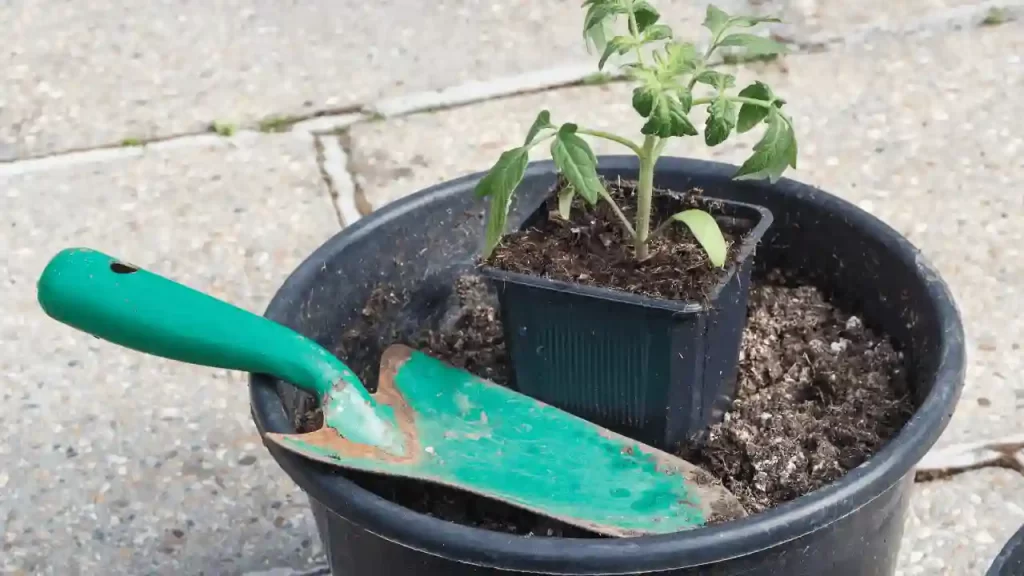
People often make mistakes while choosing the garden soil for the potted tomato plants. They bring the topsoil from the garden for their potted tomato plants.
But this soil, when used to grow tomatoes in pots, creates breathing issues for the plants, and the plants become more prone to fungus infection.
You can prepare your own soil mix with fresh compost, manure, and peat moss, or using potting soil can also enhance the growth and productivity of your tomato plant.
Putting potting soil or soil mix up to 3-4 inches in the bottom of the pot can enhance your tomato plant’s overall development and yield.
Feed your tomato plant well.
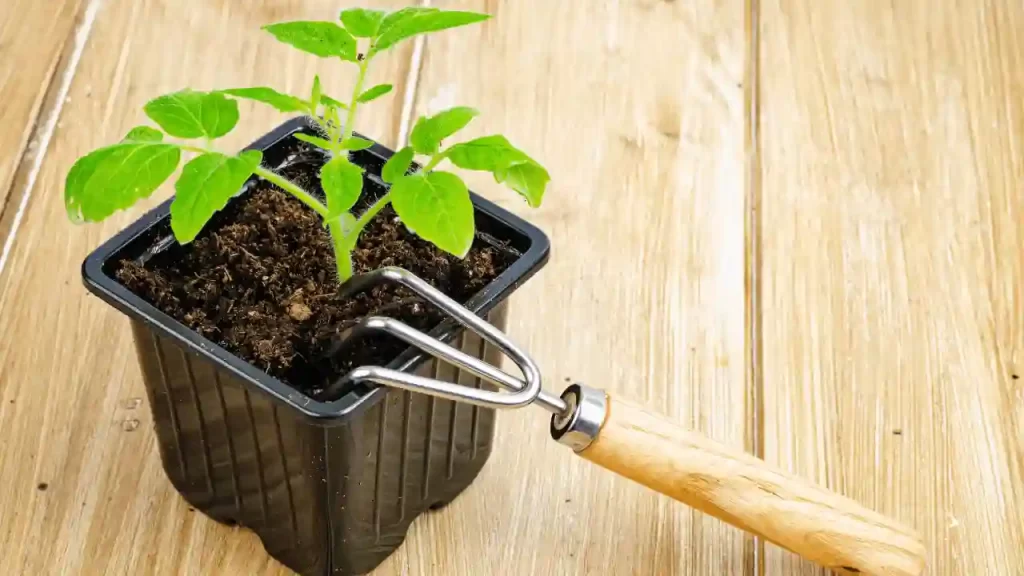
Tomato plants need plenty of nutrients for their growth and high yield. They are heavy feeders.
So mix some herbal fertilizer (read the label for quantity), bone meal, fish emulsion, and ground eggshell into the soil before planting. And later, put some 2-3 inches of potting soil on the top.
Bury the stem of the tomato plant.
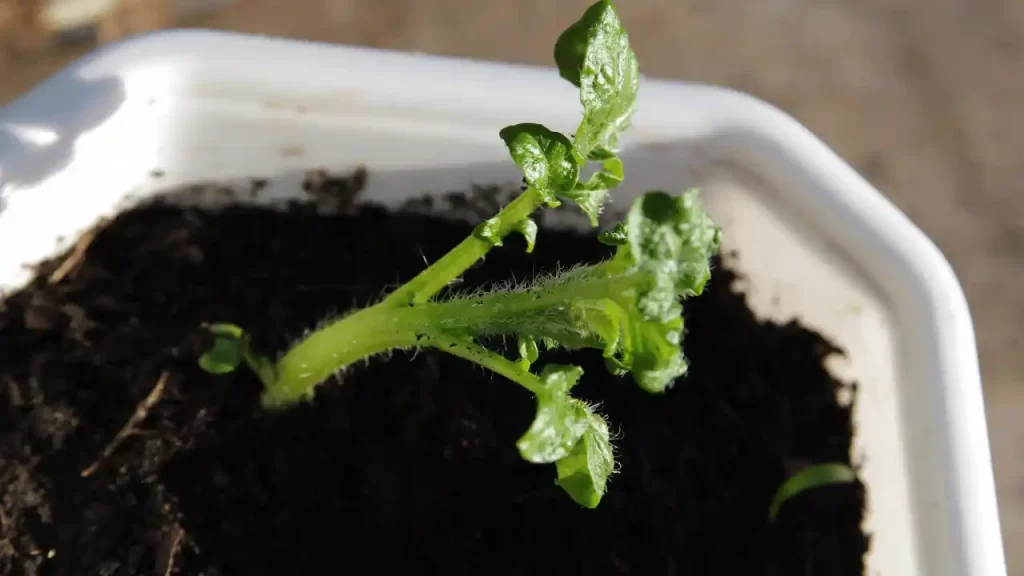
Now it turns to get the clear stem of the tomato plant. Take off all the bottom leaves from the stem (you should remove around half of the stem leaves).
Now place the stem in the middle of the pot and fill the remaining pot with some extra soil mix till the last leaves in the stem. And settle the soil in the pot; you can put some extra soil in it if needed.
Water thoroughly and consistently.
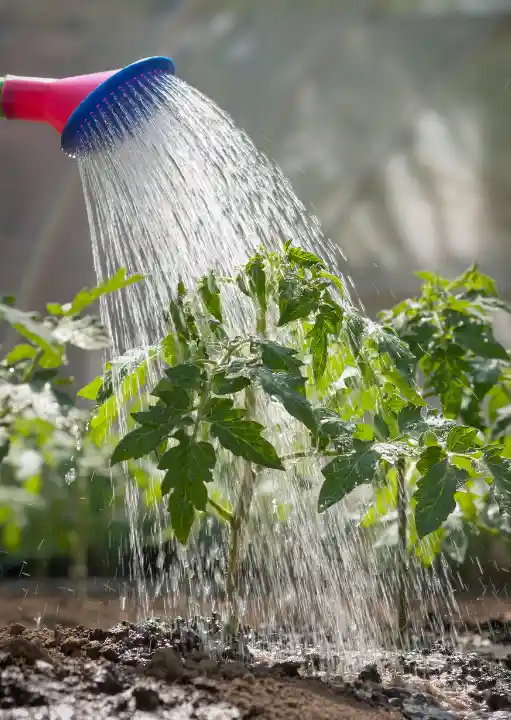
Consistent watering plays a vital role in planting tomato plants. Water in such a way that it reaches thoroughly till the roots.
Do not add much water in one go. Take a pause and water again, repeat the process until the soil becomes moist. The soil might be drained soon, but the soil still needs extra water to moisten.
Both under or over-watering your tomato plants can be hazardous for the plant and lead to Blossom End Rot or and container tomatoes can also attract pests and diseases when stressed due to excessive heat and humid climate.
Avoid overhead irrigation and use soaker hoses while watering your tomato plants. This reduces the risk of over-watering your plants.
Always check the moisture level of the soil before watering your tomato plant. Dip your dry finger in the soil, if the finger comes out dry up to 3-4 inches, then it is the right time to water your tomato plant.
During summer or hot weather, you need to check the need to water your plant twice weekly.
Potted plants (especially those planted in smaller pots) need to be watered more frequently than bedded tomato plants. They need to be watered once per day. They need to be necessarily watered deeply as 90 percent of the fruit contains water only.
Protect young transplants from frost with “walls of water.”
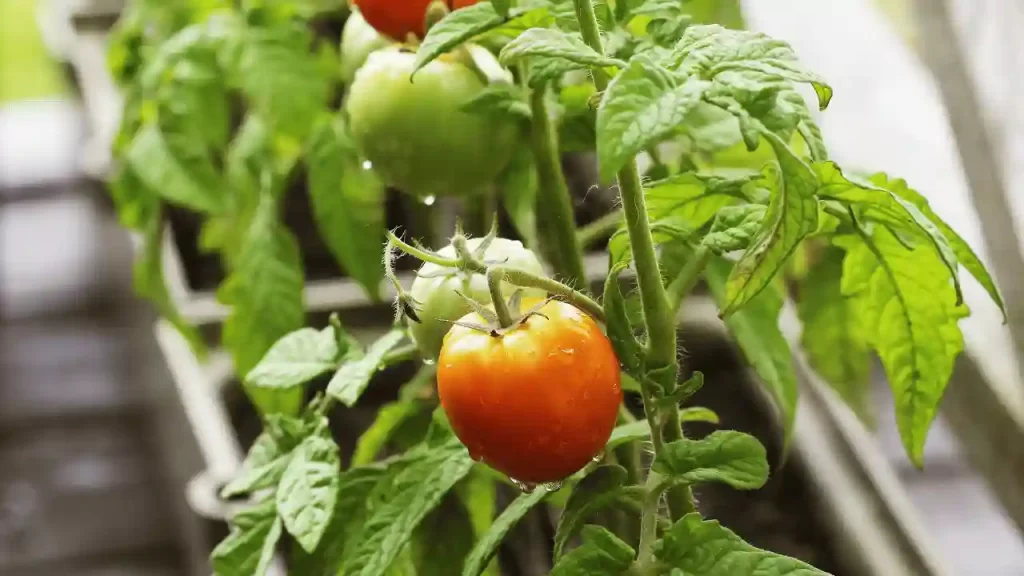
The cultivation of tomatoes mostly gets impacted due to frost at night time. So it is best to bring your planted tomato plants outside when the temperature constantly exceeds 50’F.
But where you cannot predict the temperature or when you need to necessarily bring the plant outside, you can use Walls of Water to protect your plant from frost. It works best for me. I use it from spring end to the start of summer. It keeps the plant safe and protects it from frost.
Walls of Water activate your tomato plant up to 6 weeks of frost to get transplanted. They can easily make your tomato plant resistant up to 16 Degrees F. It is also useful for your delicate or baby tomato plants. It protects them from the wind and helps them to survive.
Walls of water is a long tube made up of good-quality plastics. You need to fill the tubes with water and place them so that it becomes a support for your tomato plant. Finally, it looks like a canvas. You can also check below video for better clarification.
They play their role as an affordable greenhouse for your tomato plants. They accumulate the heat from the sun and radiate at night, which helps to maintain a consistent temperature for your plants. You need to monitor the filled water as it may evaporate and refill it when needed.
You can remove the Walls of water when threats of frost are passed and later remove the water from the tubes and re-use them in the next season.
Add your support structure.

When the tomato plants grow longer, they need proper support or else they might be damaged.
Metal conic cage is enough to support your determinate tomato plants, but they are not pretty enough for indeterminate tomato plants as they grow longer than determinate plants.
You can check this cage and Ladder for your tomato plants. You can easily fold them, keep them when not in use, and use them next season. They look pretty and are strong and easy to use.
While securing your tomato plants with Walls of Water, you can first fasten the plant with a cage or ladder, whichever you prefer. They conveniently support your tomato plants.
Mulch the soil
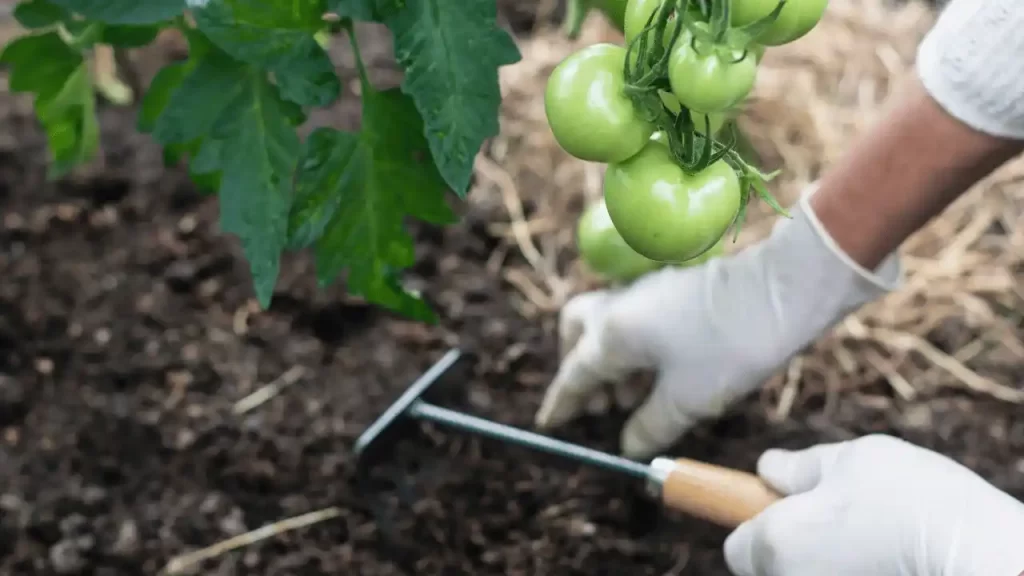
Mulching is essential, especially for potted tomato plants, to suck the excessive moisture from the soil.
You can use wooden stakes, grass clippings, bark chips, or dry leaves on the top part of the soil. Do not overload the soil with mulches.
One layer of mulches lasts for one summer and is later shredded bark converted into compost at the season’s end.
Fertilize your tomatoes consistently throughout the season.
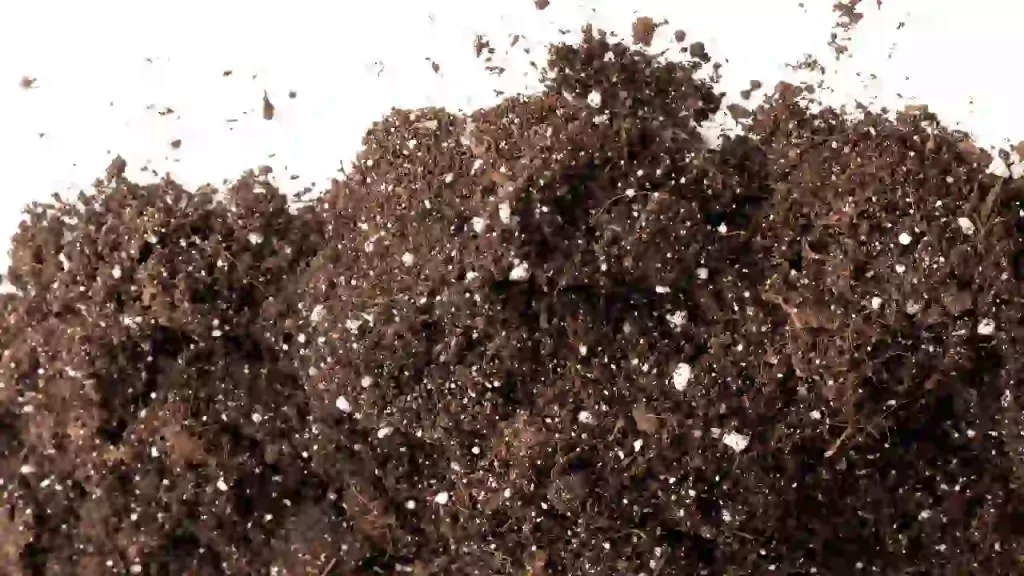
Though you have put enough material into the soil to boost its nutrients, it still needs extra fertilizer to enhance the nutrients in the soil just after six weeks.
High nitrogenous fertilizer would destroy the plant. So be specific about buying fertilizer that contains less nitrogen.
I recommend using this tomato fertilizer for better results. Read the instructions to use labeled on the packet of the fertilizer.
Summary
Growing tomato plants, even in pots, is an easy and interesting process. You can follow the above instructions, grow organic juicy and fresh tomatoes even in less space, and enjoy them. A little care for your tomato plant can increase the yield and maintain healthy growth.
Frequently Asked Questions
How deep do containers need to be for tomatoes?
The depth of a tomato container depends on the variety of tomato plants grown. Generally, dwarf and determinate varieties require an 8-10 inch deep container, while indeterminate and vining varieties need at least 12-16 inches of soil depth in their pot.
To make sure your tomatoes have adequate space to stretch their roots, use the largest container size possible for your variety.
Depending on the tomato variety, the pot’s diameter should be about 12-18 inches. Plants growing in containers need more consistent watering and fertilizing than those planted in a garden bed, as they have less soil to draw nutrients from and hold water.
What kind of pots do tomato plants need?
Plastic or terracotta/clay pots are great for tomatoes, as they retain moisture and heat better than metal or ceramic. Make sure the pot is at least 8 inches deep so that there is enough room for the roots to grow. Choose a pot with plenty of drainage holes in the bottom; if necessary, add more drainage holes.
